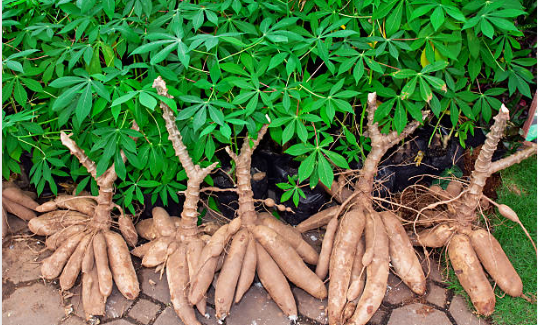The South Sudan National Ministry of Agriculture and Food Security (MAFS) in partnership with the International Committee of the Red Cross (ICRC) last week introduced two new cassava varieties, Mayumbe and Sawasawa, to boost food security across the country.
The two varieties were identified in and brought from the Democratic Republic of Congo (DRC) and tested by a team of South Sudanese agronomists and are adaptable to South Sudan’s green belt.
According to the agriculture officials, the test adaptability tests were done in Magwi County in Eastern Equatoria State and Mundri in Western Equatoria State and plans are underway to introduce them in Yambio, Maridi, Yei, Magwi, and Ikotos.
Speaking after the certification of the new cassava varieties, Dr. Loro George Leju, the director general for agriculture production at the ministry, said the new varieties should not end at the research station but be distributed to the designated areas.
“We are releasing these two varieties in addition to several other varieties released before and I would like to emphasize that they should be given to specific farmers appointed by the farmers’ producers unions,” he said.
Meanwhile, ICRC Deputy Head of Delegation Andrea Heath said the two varieties will improve food security across the country.
“We are striving as ICRC to improve the food security in South Sudan as much as we can support at the community level but also with the authorities. We have worked with these cassava varieties which are very resistant to very serious diseases such as cassava mosaic in Congo and also in Central African Republic and it showed very good results,” she said. “Farmers can harvest more because of this resilience and the production is much higher. Now we have introduced this through a pilot in South Sudan and the varieties have done well in terms of growth and production.”
“The release of these two varieties will allow for cassava farmers to produce more for their consumption but also to sell in the market,” Heath added.
She said ICRC will help in the replication of the varieties to the farmers in the country.
For his part, George Tedu, the director general for research and focal person for cassava varieties at the agriculture ministry, said the project is meant to increase the resilience of rural farmers.
“This project is targeting the rural poor to increase their resilience to disease pressure which is common in South Sudan, particularly due to the cassava mosaic disease and cassava brown steak,” he said. “With this introduction, we are adding the resilience for farmers to increase their production and income. The recommendation from the farmers rated these two cassava varieties as one of the best in terms of palatability and marketability.”
The agriculture ministry said the new cassava varieties are consumable from 9-12 months after planting.




